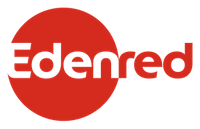5 ways to use nudge theory to promote wellbeing support take-up
The term nudge theory, coined by economists Richard Thaler and Cass Sunstein in 2008, is about using small, strategically designed interventions to guide people towards making choices that are in their best interest.
The theory is often used to support public policy – a well-known example is the traffic light system on food packaging that tells people about salt, sugar and fat content.
Increasingly, nudges are also useful for people management teams that want to promote initiatives that boost financial, physical and mental wellbeing.
While you can’t force people to take any of these benefits up, you know in the long run it will be better for them and for the organisation as whole if they do.
So here are 5 ways to use nudge theory to promote take-up of your wellbeing support.
1. Lead by example
People don’t necessarily want leaders telling them what’s good for them. But it does help if they show how they are engaging with the services you offer.
Ask your leaders to talk about the benefits they’ve taken up personally and spread the word through all appropriate channels.
One of Edenred’s clients at the Department for Transport created TikTok style videos starring senior leaders. The impact in awareness and take up of benefits was huge.
2. Create case studies
Internal case studies are effective nudges that help to drive engagement. Ask all your employees to share their tips on how they get the most from their benefits, how much they’ve saved and how much better they feel.
Promote their stories through social channels like your Teams channel and Yammer and start a conversation. There’s nothing quite like word of mouth to help you get the message through.
3. Be subtle and empathic
Many people are put-off offers like gym memberships, perhaps because the imagery often involves super fit people working towards high level goals.
This can prevent people from getting started in the first place, so focus instead on secondary benefits like getting better sleep because of regular exercise.
Use the internal case studies you gather to emphasise your point. Also, avoid the temptation to be too critical of behaviours. If you’re promoting a Cycle 2 Work scheme vs car travel, emphasise personal cost savings and health benefits as much as the damage caused by CO2 emissions.
4. Get employees involved making decisions
When you’re reviewing or developing your benefits programme, get employees involved with through focus groups. If your workforce collaborates with you on the development and selection of wellbeing benefits, you are more likely to get better buy-in and a sense of employee ownership that will help to foster behavioural change.
5. Be creative with your signposting
Many organisations choose to push benefits like retail discounts around events like Black Friday. But such events are also an opportunity to signpost people to other services you offer, such as independent financial advice and counselling.
People should never feel forced to use the advice and support you offer. But it’s a good to remind them at the right time that you provide support whenever they might need it.
Nudge theory is built around thinking about desired outcomes or behaviours then applying the appropriate ‘nudge’ to help you achieve your goal. Be subtle, be empathetic and remember that people should also feel they have complete freedom of choice.
Supplied by REBA Associate Member, Edenred
We help you build stronger connections with your employees to drive higher engagement&performance.








